Introduction
Today’s new world of work poses an entirely new set of challenges unbeknownst to business leaders and HR managers of the past. Imagine an HR manager in 1975 budgeting for weekly staff yoga sessions!
The competitive advantage of companies that invest in their employee experiences is widely recognized. Management values the importance of a healthy and inspirational company culture in every facet of an employee’s daily interactions, and its impact on the company’s bottom line. Furthermore, in today’s tight labor market, we stand to lose top talent if we ignore the way our company portrays itself to new hires.
Herb Kelleher, the visionary CEO and Co-founder of Southwest Airlines, is quoted as saying “Culture is how you act when no one is looking.” While companies go to great lengths to attract desirable candidates and make a positive first impression, Herb’s description hit the nail on the head. It is precisely this truth that impacts recruitment efforts – with 29% of our respondents indicating they will reach out to employees to discuss workplace culture prior to accepting a job offer. 37% claim they would reconsider their acceptance of an offer if the employee they spoke with was overworked. This drives home the significance of investing in a positive company culture.
At HiBob, we approach people management in a personalized, holistic, and data-driven way. That is why we have turned to the number one asset of every company– its people– to grasp a clear picture of what makes company culture more desirable and successful. Research data offers an advantage by identifying the most impactful culture-building strategies. By listening to the preferences and priorities of employees, we are able to make data-driven decisions that establish a winning culture.
Company culture 101
Let’s take a few steps back to define what constitutes workplace culture.
Company culture is hard to define, and embedding the company’s mission and values into the company’s DNA is difficult to do. Culture cannot be created or applied using a standard template, or even by imitating the best of breed companies. Rather, it is unique to every company and takes shape from the moment a company is founded.
Intuit co-founder Scott Cook was said to have written an employee handbook on his first day on the job when Intuit employees numbered two – it’s never too early to plan. Cultures and norms will develop with or without conscious effort, so by charting company values and a clear mission statement companies will help align the company’s direction and goals as it scales and its headcount grows.
“Culture is the set of behaviors, values, artifacts, reward systems, and rituals that make up your organization. You can “feel” culture when you visit a company, because it is often evident in people’s behavior, enthusiasm, and the space itself.”
Company culture seems to be a soft concept that is hard to measure, but its impact on profit has been quantified with effective culture accounting for 20-30% of the differential in corporate performance when comparing a company with its culturally unremarkable competitors.
…as much as half of the difference in operating profit between organizations can be attributed to effective cultures. Why?
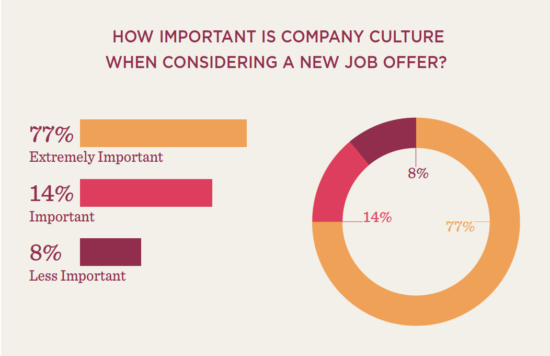
“We know, for example, that engaged managers and employees are much more likely to remain in an organization, leading directly to fewer hires from outside the organization… This, in turn, results in lower wage costs for talent; lower recruiting, hiring, and training costs; and higher productivity (fewer lost sales and higher sales per employee). Higher employee continuity leads to better customer relationships that contribute to greater customer loyalty, lower marketing costs, and enhanced sales.”
James Heskett, UPS Foundation Professor of Business Logistics, Emeritus at the Harvard Business School
Company culture through the lens of a potential candidate
HR Managers dedicate much of their efforts and energy to stepping up their hiring practices, be it in terms of crafting stellar job descriptions, exploring job boards, pinpointing and recruiting passive candidates, creating the ultimate onboarding process, and developing a clear employer brand to attract the right candidates.
Much has been discussed surrounding the current retention crisis and how companies struggle to build loyalty among their talent. And while company culture is a critical component of every employee’s experience which will impact their decision to stay or go, the same holds true when recruiting potential candidates. 77% of people said company culture was extremely important to them when considering a new job.
How important is company culture when considering a new job offer?

Social media has transformed the traditional job search, offering job seekers transparency about workplace culture on platforms like LinkedIn, Glassdoor, and Indeed, among others. One- third of those asked (32%) indicated that they look at a company’s website prior to applying for a job, while 20% read Glassdoor reviews about the company, and 19% visit its social media profiles on Twitter, Facebook, or Instagram.
“Poor culture and employee dissatisfaction are driving away more than two-thirds of candidates. In order to thrive in today’s quitting economy, companies must create workplace experiences designed to retain today’s workforce by promoting a clear work/life balance”
Ronni Zehavi, CEO, HiBob HR Dive
One may argue that the power is still in the hands of the employer, who portrays the company on the web using carefully crafted content to draw in the talent it seeks. But be warned: nearly 30% of people said they found the way a company presented itself online was misleading.
Today’s transparency has caused a shift, where job seekers have greater bargaining power than ever before. If your company is not a great place to work, this information is likely to find its way to your candidates. 29% of those asked went the extra mile and contacted employees to decipher if this is the kind of workplace they’d like to be part of. Needless to say, a positive and supportive workplace culture is essential for recruiting the best people.
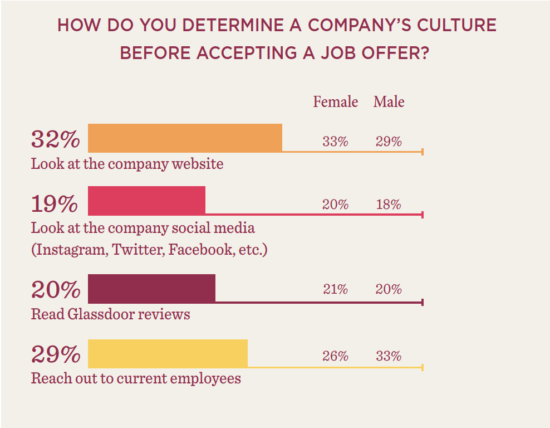
Women determine culture based on the company website, social media, and Glassdoor while men determine culture based on reaching out to current employees and the company website.
Older generations reach out to the organization to learn about the company culture where younger generations look at social media and Glassdoor.
Warning signs of a toxic culture
Desirable company cultures are an aspiration for some, but are far from the norm, with toxic workplaces driving 20% of employees in the US out of their jobs over the last five years and costing US businesses $223B.
Whether researching a workplace prior to accepting a job offer or while settling into a job, certain behaviors exhibited by a company’s leaders or its people may raise a red flag about its culture. One clear indicator of a corrosive workplace is rapid turnover, which may be the end result of numerous problems that include:
- Domineering, narcissistic leadership
- Team members that don’t respectfully disagree or speak up
- Dysfunction across the board
- Employee burnout
- Underappreciation
- Unhealthy competition between teammates
- Limited-to-no growth opportunities
- Bias/ lack of diversity in promotion
- Underperformers are not addressed
- Selfishness, no team spirit
- Gossip, backstabbing
These are some surefire signs that scream “get out” to those still finding their footing in a company or “stay away” to potential candidates. In fact, 37% of those we asked said they’d turn down a job offer if the company’s employees were burnt out, and 33% would be wary of a high turnover rate. Other factors, including competitiveness among
team members or a boring company culture would cause more than 30% of candidates to reconsider a new job opportunity.
36% of those we asked said they’d turn down a job offer if the company’s employees were burnt out. 33% would be wary of a high turnover rate. Other factors, including competitiveness among team members or boring company culture, would cause more than 30% of candidates to reconsider a new job opportunity.
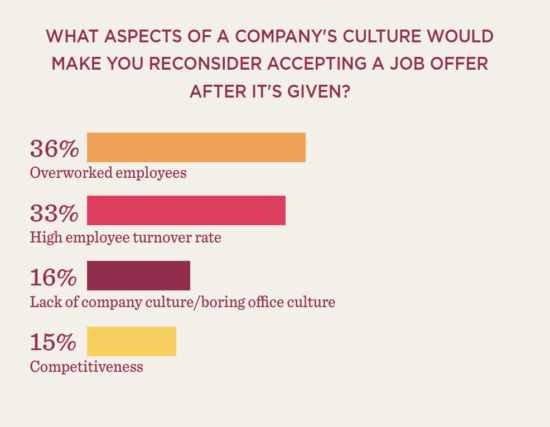
69% of candidates will reconsider a job offer if the company has high employee
turnover or if the workers seem burnt out.
An attainable path to promotion is a top priority 56% ranked opportunities for growth as more important than salary. What job factors would you rank as more important than salary?
Even more than the average 62% of 18-24-year-olds and 59% of 25-34-year-olds
ranked opportunities for growth as more important than salary.
Indicators of a positive workplace culture
With 90,000 some work hours in a lifetime, it would be foolish to waste precious time in a workplace culture that doesn’t resonate with one’s values. Furthermore, today’s incoming workforce is highly purpose-driven and less likely to settle for a job they don’t enjoy doing.
Our research points to attractive company policies that are likely to win the hearts of potential candidates and engage existing employees:
Clear opportunities for growth: An attainable path to promotion is a top priority said 56% of employees, ranking opportunities for growth as more important than salary.
An agreeable vacation/flexible benefits, work/life balance is most likely to be a winner. Flexible working hours and unlimited vacation time make most employees more willing to join or stay with a company. The amount of vacation time offered (45%) and commute distance (35%) hold strong influence over someone’s decision to join a company.
24% of those asked said flashy office settings with perks like happy hours, dry cleaning services or ping-pong tables may be nice to have, but a positive work environment with happy employees is ultimately what makes people want to join a company and stay there.
Industry analyst and researcher Josh Bersin studied many of these so-called “irresistible workplaces” and concluded that there are five key elements which drive engagement:
- Meaningful work
- Great management
- Growth opportunities
- Inclusive, flexible and fun environment
- Leadership we can trust
The effect of bad culture
Only 25% of employees left their previous role because they felt underpaid.
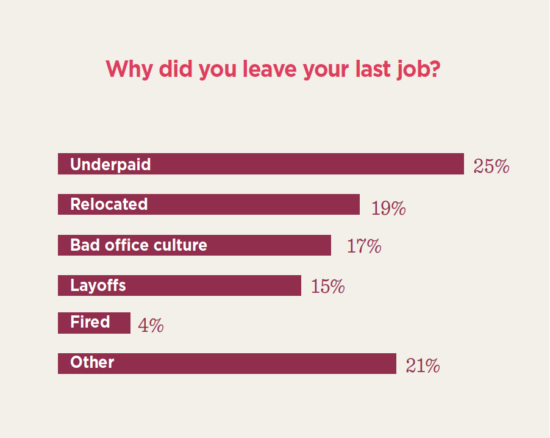
What makes people leave their job
Differences between men and women.
Women are more affected than men by bad office culture.
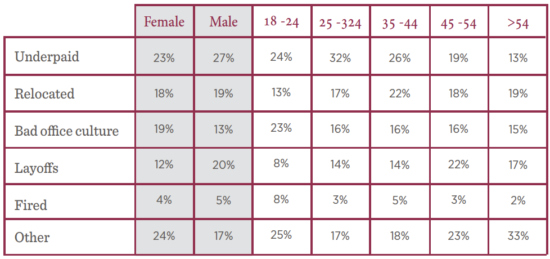
Differences between generations
Boomers are concerned with layoffs and generation X with relocations, while millennials are most affected by being underpaid and Gen Z are more impacted by bad office culture.
Boomers are concerned with layoffs and generation X with relocations, while millennials are most affected by being underpaid and Gen Z are more impacted by bad office culture.
Five elements drive engagement
The matrix below provides the tenets upon which companies can
create a culture that is hard to resist:
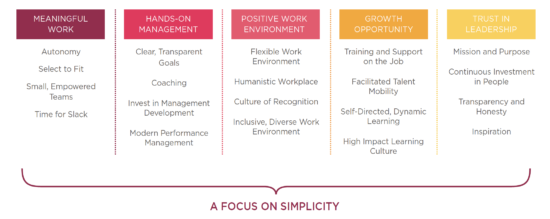
“In today’s highly competitive economy, being “irresistible” is one of the greatest competitive strengths you can have.”
Josh Bersin
Takeaways for HR professionals
With company culture on every company’s agenda, HR leaders are under increasing pressure to develop an irresistible workplace and foster the company culture. Here are some points that can help guide you in this important undertaking:
Clearly define and communicate the company’s vision
A company that lacks clear missions, goals, values, and strong leaders to drive its culture, is most likely to suffer from disengagement. The executive team must intentionally create a company culture that gives employees reasons to come to work each day above and beyond their salary slip. Cultures where people matter gives employees the sense that they are part of something bigger. These individuals are most likely to go above and beyond their call of duty.
Leadership sets the tone
While HR typically owns projects surrounding organizational culture, the CEO and upper management are inevitably the ones in the driver’s seat. Make sure that the desired company culture and ideology goes hand in hand with its leadership style.
As an example, if the style of leadership is rigid and secretive, you cannot be expected to create a culture that touts transparency. The behavior and interactions from above trickle down and inevitably permeate every level of the company. As such, the C-Suite’s buy-in and cooperation are crucial to instilling positive values across the company.
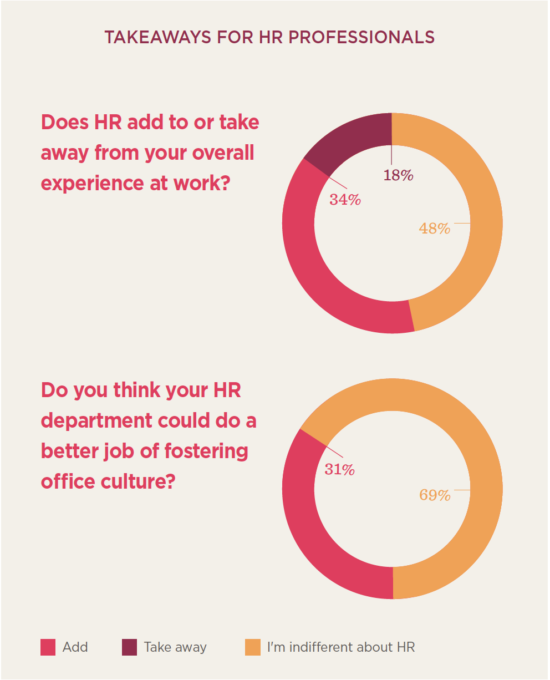
Steering the company culture
As HR leaders, we may not hold the power to determine the culture, but we are most often the ones driving it. We are well placed to understand our people’s concerns, be it through engagement surveys or focus groups, and work hard to understand their frustrations and take necessary action. Our knowledge and expertise in the human realm equip us with the skills to influence leaders to steer the company’s culture in the right direction.
Acting as gatekeepers of culture
Once the company adopts a positive culture, and everyone is on board, it is the role of business units to own and implement necessary changes while HR’s role shifts to a facilitator. This means ensuring leaders are prioritizing culture, as it tends to get pushed back in favor of competing priorities. HR must coach company execs to promote the culture in a consistent way. Safeguarding the company culture means terminating poor performers and replacing them with a better cultural fit.
Detoxifying negative culture
Whether you’re new at your company or something negative has recently come to your attention, HR leaders are held responsible for nurturing a healthy and positive culture, and own the daunting task of transforming toxic culture. Tread carefully to build trust and support within the company. Quantify the damage done and propose a new path forward.
Nothing happens overnight!
It takes time for companies to adapt to change. With consistent communication and support by managers, your teams will internalize, exemplify, and appreciate the company’s culture just as you hoped.
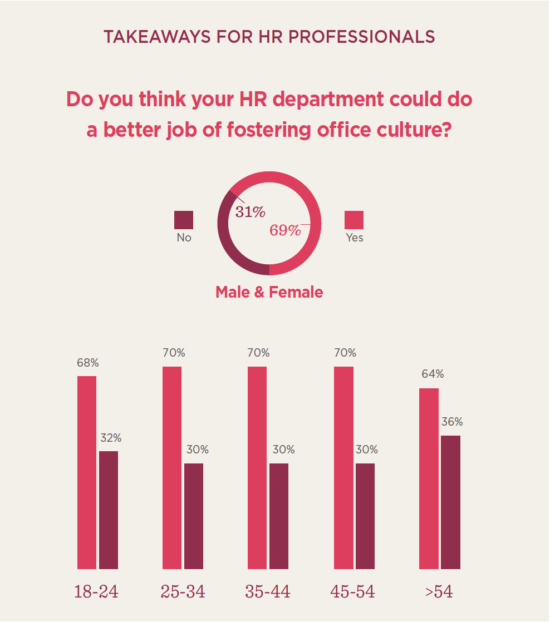
In conclusion
In today’s competitive landscape, business leaders strive to foster an inviting and positive company culture. One that is flexible and human, where individual contribution is acknowledged and appreciated. The process of defining company culture and instilling its values is challenging, both for HR and company executives.
Our research shows that both employees and candidates put more weight on culture than compensation. With a majority of employees expressing a lack of engagement and a quitting epidemic plaguing our workforce, every company must take an honest look in the mirror and reassess the strategies, processes, and norms that make up its company culture.
Netflix shared its company culture with the world in 2009 when its CEO Reed Hasting published the company’s culture deck on the web, revealing its timeless take on maintaining a positive company culture.
“We keep improving our culture as we grow. We try to get better at seeking excellence.”
Netflix company culture deck
Company cultures must continuously evolve to adapt to societal advancements and industry changes. The data we provide in our research sheds light on what people really want from workplace culture, from the viewpoint of potential hires and employees. Given the emphasis placed on culture, this is one area your company ought to invest in to maintain an edge.
Methodology
The national survey was conducted online by Pollfish on behalf of HiBob, on May 16, 2019. It includes responses from 1,000 employees age 18 and up in the United States.
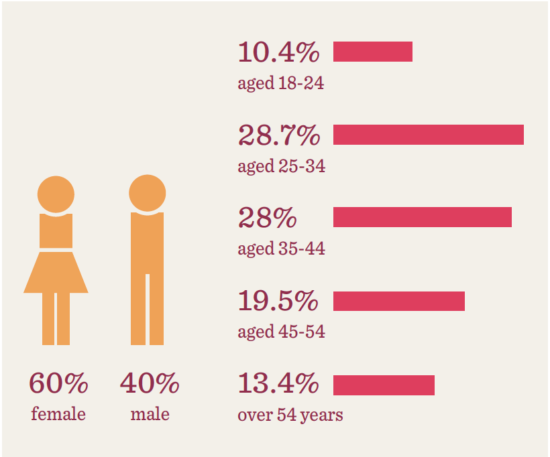
Recommended For Further Reading
Meet Bob
We know how important it is to make holistic, data-driven decisions about your people, especially in light of today’s modern workplace changes. That’s why we designed Bob, an employee experience platform that provides your people with core components and tools that create a strong, growth-centric company culture.
Bob creates a unique sense of belonging amongst your people while making a positive impact on employer branding to improve recruitment and retention rates across the board. Level up company culture with Bob’s Onboarding, Surveys, and Culture features.
Bob creates first-class cultures
Onboarding – make a lasting good impression on new hires
- Get new hires orientated the most efficient way possible
- Have new hires fill out forms before their first day
- Introduce new hires via Shoutouts and with fun polls
Surveys – understand your people and what makes them happy
- Check on communication, attitude, and satisfaction
- Explore growth and engagement through feedback
- Discover top influencers and talent using peer input
Culture – build a hub for social interaction that brings people together
- Staff can bond through shared interests and clubs
- Shoutouts change the way people share and update
- Customize and share superpowers and hobbies
